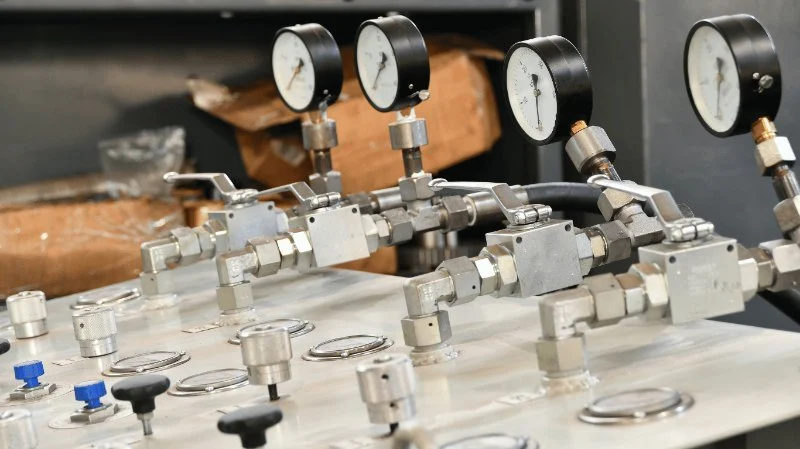
How to Test Pressure Drop in a Long Pipe Run
- 1. Understanding Pressure Drop
- 2. Why You Need to Test Pressure Drop
- 3. Methods for Testing Pressure Drop
- 4. Tools Needed for Pressure Drop Testing
- 5. Troubleshooting Pressure Drop Issues
1. Understanding Pressure Drop
Pressure drop is a critical factor in fluid flow systems, especially when dealing with long pipe runs. It occurs when there is a reduction in pressure from the start to the end of the pipe, usually due to friction between the fluid and the pipe walls. The longer the pipe, the more friction is generated, and the greater the pressure loss. Understanding pressure drop is essential for maintaining efficient system performance and ensuring that your fluid distribution system operates at its peak capacity.
1.1 Factors That Cause Pressure Drop
Several factors contribute to pressure drop in a long pipe run, including pipe length, diameter, surface roughness, the fluid’s viscosity, and flow rate. These elements can cause significant resistance to fluid flow, leading to higher pressure losses, especially in larger systems. For instance, thinner pipes with rougher interiors create more friction, which increases the pressure drop.
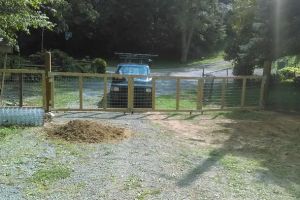
Paul Walter's Plumbing & Rmdlg
Johnson CityCarter CountyTennessee
104 Hidden Oaks Dr, Johnson City, TN 37601, USA
1.2 Effects of Excessive Pressure Drop
If pressure drop becomes too significant, it can lead to reduced flow rates, which may result in equipment failure, inefficient operation, or even system breakdowns. In many cases, measuring and testing for pressure drop is vital for identifying issues early, so they can be addressed before they cause serious problems.
2. Why You Need to Test Pressure Drop
Testing pressure drop in your pipe system is crucial for several reasons. First, it helps ensure the system is operating within the design parameters. Second, testing can pinpoint areas where the pressure loss is higher than expected, allowing for timely adjustments. Lastly, it aids in identifying potential causes of inefficiency or failure, such as pipe blockages, leaks, or poor pipe design.
2.1 Improving System Efficiency
By testing the pressure drop, you can optimize your system’s performance. If the pressure drop is too high, it could mean your pump or compressor is working harder than it should, leading to increased energy costs. Regularly testing pressure drop helps to identify these issues, allowing for system adjustments that can improve efficiency and reduce operational costs.
2.2 Preventing System Failures
One of the primary reasons for testing pressure drop is to detect early signs of failure. Leaks, corrosion, or pipe wear can all contribute to abnormal pressure drops. If left unaddressed, these issues can result in system shutdowns or costly repairs. By routinely testing for pressure drops, you can prevent catastrophic failures and extend the lifespan of your system.
3. Methods for Testing Pressure Drop
There are several methods available to test pressure drop in a long pipe run. The method you choose will depend on the type of system you are working with, the equipment available, and the level of accuracy required. Here are the most common approaches:
3.1 Differential Pressure Gauges
A differential pressure gauge is one of the most straightforward tools for measuring pressure drop. It measures the difference in pressure between two points along the pipe. By installing the gauge at both the inlet and outlet of the pipe, you can calculate the pressure drop directly. This method is widely used because it is easy to implement and provides quick results.
3.2 Flow Meters
Flow meters can also be used to test pressure drop, particularly when combined with other instruments. These devices measure the flow rate of the fluid and, when coupled with pressure measurements, help to calculate pressure loss over a given distance. This method is ideal for systems where flow rate is a significant variable in pressure drop calculations.
3.3 Computational Fluid Dynamics (CFD)
For larger or more complex pipe systems, Computational Fluid Dynamics (CFD) software can be used to model and predict pressure drops. CFD simulations can provide highly accurate results by analyzing the fluid dynamics within the system and identifying areas where pressure loss is likely to occur. While this method requires specialized software and expertise, it is invaluable for large-scale industrial applications.
4. Tools Needed for Pressure Drop Testing
To accurately test pressure drop in a long pipe run, certain tools and equipment are necessary. The tools you need will depend on the method you choose for testing and the specifics of your system.
4.1 Pressure Gauges
Pressure gauges are essential for measuring the pressure at different points in the system. You will need high-quality, calibrated gauges that are capable of handling the pressure range expected in your system. These gauges are usually installed at the inlet and outlet of the pipe or at critical points where pressure measurements are needed.
4.2 Flow Meters
Flow meters are necessary if you want to measure the flow rate of the fluid in addition to the pressure drop. This tool is especially useful for complex systems where flow rate plays a critical role in understanding the causes of pressure loss.
4.3 Data Loggers
Data loggers can be used to continuously monitor and record pressure drop over time. These devices store pressure readings at intervals, which allows you to track changes in pressure drop and identify trends that may indicate problems in the system.
5. Troubleshooting Pressure Drop Issues
If you encounter unexpected pressure drops, there are a few common issues to consider. Troubleshooting the problem as soon as possible will help avoid costly repairs or downtime. Here’s how to approach pressure drop issues:
5.1 Leaks
Leaks in the pipe or fittings are a frequent cause of pressure drop. If you notice a significant pressure drop, inspect your system for any visible leaks or listen for hissing sounds that may indicate air or fluid escaping from the system. Use leak detection solutions or pressure testing equipment to pinpoint the location of the leak.
5.2 Blockages
Blockages in the pipe, caused by debris, sediment, or corrosion, can significantly reduce flow and increase pressure drop. Regular inspection and maintenance of pipes can prevent blockages. If you suspect a blockage, you may need to perform a flow test or use a camera inspection to identify the location of the obstruction.
5.3 Improper Pipe Sizing
Improper pipe sizing can lead to excessive pressure drop. If the pipe diameter is too small for the required flow rate, it will create resistance that increases pressure loss. Reviewing the system’s design and ensuring that the pipe size matches the required flow specifications can help alleviate this issue.

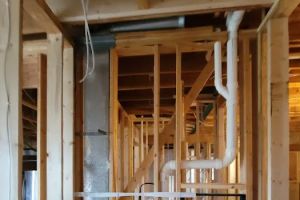


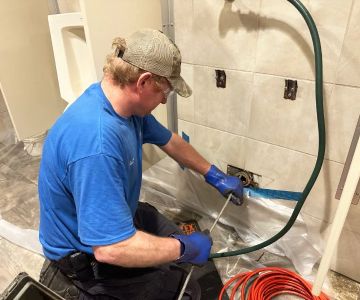
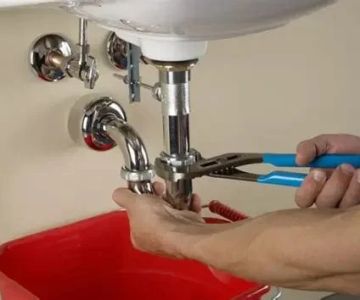
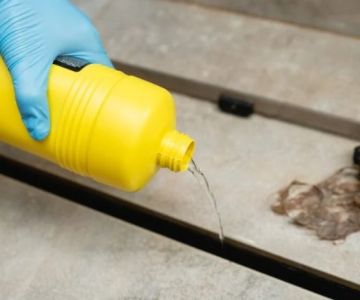

 Tommie's Plumbing4.0 (508 reviews)
Tommie's Plumbing4.0 (508 reviews) Plum Perfect Plumbing4.0 (23 reviews)
Plum Perfect Plumbing4.0 (23 reviews) Chastain Plumbing, Heating and Cooling4.0 (172 reviews)
Chastain Plumbing, Heating and Cooling4.0 (172 reviews) New Philly Plumbing LLC4.0 (29 reviews)
New Philly Plumbing LLC4.0 (29 reviews) Plumbing Matters Rooter & Plumbing Services Incorporated5.0 (375 reviews)
Plumbing Matters Rooter & Plumbing Services Incorporated5.0 (375 reviews)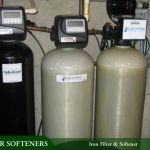 Podella Plumbing & Heating LLC5.0 (6 reviews)
Podella Plumbing & Heating LLC5.0 (6 reviews) How to Choose a Reliable Plumber for Emergency Repairs
How to Choose a Reliable Plumber for Emergency Repairs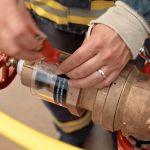 How to Replace a Malfunctioning Pressure Reducing Valve
How to Replace a Malfunctioning Pressure Reducing Valve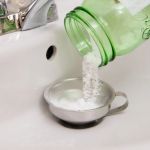 How to Use Baking Soda and Vinegar to Clear Clogged Drains
How to Use Baking Soda and Vinegar to Clear Clogged Drains What Causes Discolored Water and When to Worry: Causes, Effects, and Solutions
What Causes Discolored Water and When to Worry: Causes, Effects, and Solutions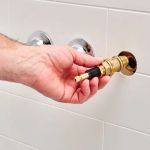 How to Replace an Outdated Plumbing Fixture Safely: A Step-by-Step Guide
How to Replace an Outdated Plumbing Fixture Safely: A Step-by-Step Guide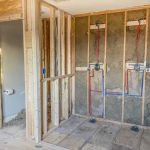 How to Handle Plumbing in Mobile Homes: Essential Tips and Solutions
How to Handle Plumbing in Mobile Homes: Essential Tips and Solutions